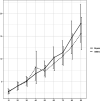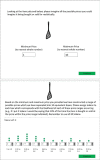The Endowment Effect and Beliefs About the Market
- PMID: 33816642
- PMCID: PMC7983076
- DOI: 10.1037/dec0000143
The Endowment Effect and Beliefs About the Market
Abstract
The endowment effect occurs when people assign a higher value to an item they own than to the same item when they do not own it, and this effect is often taken to reflect an ownership-induced change in the intrinsic value people assign to the object. However recent evidence shows that valuations made by buyers and sellers are influenced by market prices provided for the individual products, suggesting a role for beliefs about the markets. Here we elicit individuals' beliefs about whole distributions of market prices, enabling us to quantify whether or not a given transaction constitutes a "good deal" and to demonstrate how an endowment effect may reflect such considerations. In a meta-analysis and three laboratory experiments, we show for the first time that ownership has no effect on beliefs about either: (a) the quality of the item or (b) the appropriate market price for the item. Instead, we show that sellers demand a price for the item that matches their beliefs about the item's relative quality and the distribution of market prices in the market. Buyers, in contrast, offer less than what they believe the appropriate market price is. Thus, we argue that the endowment effect may largely reflect "adaptively rational" behavior on the part of both buyers and sellers (given their beliefs about relevant markets) rather than any ownership-induced bias or change in intrinsic preferences.
Keywords: endowment effect; good deal; market price; ownership; valuation.
© 2020 The Author(s).
Figures








References
-
- Abofol T. (2016). The seller's sense: Buying-selling perspective affects the sensitivity to expected-value differences (Unpublished doctoral dissertation). Technion - Israel Institute of Technology.
-
- Arlen J., Spitzer M., & Talley E. (2002). Endowment effects within corporate agency relationships. The Journal of Legal Studies, 31, 1–37. 10.1086/324659 - DOI
-
- Ashby N. J. S., Dickert S., & Glockner A. (2012). Focusing on what you own: Biased information uptake due to ownership. Judgment and Decision Making, 7, 254–267.
-
- Ashby N. J. S., Walasek L., & Glöckner A. (2015). The effect of consumer ratings and attentional allocation on product valuations. Judgment and Decision Making, 10, 172–184.
LinkOut - more resources
Full Text Sources
Other Literature Sources
